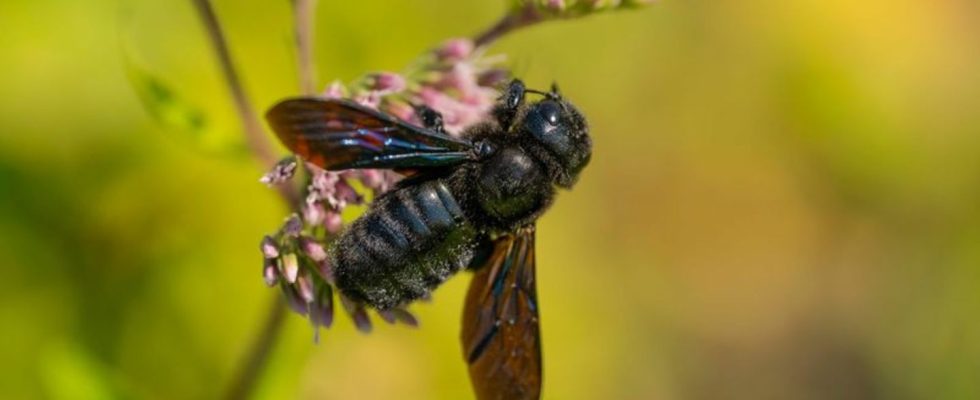Animals
Blue-black carpenter bee is “wild bee of the year”
Blue-black carpenter bees are among the largest wild bees in Germany. photo
© Jürgen Busse/NABU/dpa
Even if their impressive appearance and loud humming sound can inspire respect, carpenter bees are gentle giants. A species has now been given a special honor.
The blue-black carpenter bee is wild bee of the year 2024. This was announced by the nature conservation organization Nabu with. The gentle giantess commands respect with her size and loud hum. Xylocopa violacea is harmless. Blue-black carpenter bees are among the largest wild bees in Germany, have shiny bluish wings and a black, hairy body. The responsible board of trustees has been selecting the “Wild Bee of the Year” since 2013.
So far, three species of carpenter bees (Xylocopa) have been found in Germany, of which the blue-black carpenter bee is the most common and widespread. The females are between two and three centimeters tall. Its relative, the small carpenter bee (Xylocopa iris), is significantly smaller at 14 to 16 millimeters. It occurs sporadically in Alsace and in Baden on the southern Upper Rhine. The third in the group is the southern carpenter bee (Xylocopa valga). It has only been detected in Germany since 2009 and has been spreading northwards ever since.
The now named wild bee of the year is widespread in Baden-Württemberg, with a clear focus on the river lowlands. The blue-black carpenter bee is now found throughout Germany after the heat-loving species has expanded its range in recent years from the southwest into the northern federal states and beyond to Denmark as a result of global warming. Orchards are among the favorite biotopes. It can also be found regularly in villages and cities, for example on green facades with honeysuckle or wisteria or on beds with clary sage or large-flowered sweet peas.
According to the “Wild Bee of the Year” board of trustees, it is important to use the “Annual Bee” to provide an insight into the exciting world of these important flower pollinators.

